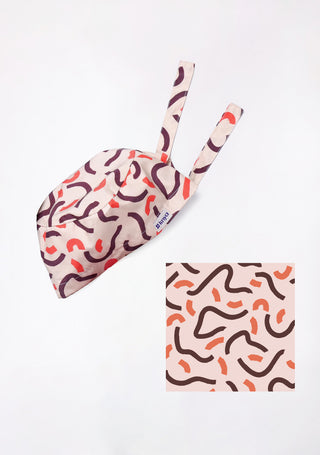Peripheral artery disease (PAD) and peripheral vascular disease (PVD) are often used interchangeably, but they refer to different aspects of vascular health. Understanding the distinctions between these conditions is essential for accurate diagnosis and effective management.
Browse best Scrubs Collection
Difference Between Peripheral Artery Disease and Peripheral Vascular Disease
Here is a detailed overview of the differences between peripheral artery disease and peripheral vascular disease:
| Feature | Peripheral Artery Disease (PAD) | Peripheral Vascular Disease (PVD) |
| Definition | PAD is a specific type of peripheral vascular disease where arteries outside the heart and brain become narrowed or blocked, primarily affecting the legs. | PVD is a broader term that includes any disease affecting the blood vessels outside the heart and brain, including arteries, veins, and lymphatic vessels. |
| Affected Vessels | Primarily affects the arteries, especially those in the legs. | Affects various blood vessels including arteries, veins, and lymphatic vessels. |
| Common Causes | Often caused by atherosclerosis, where fatty deposits build up in the arterial walls, reducing blood flow. | Includes a range of conditions such as atherosclerosis, chronic venous insufficiency, and varicose veins. |
| Symptoms | Symptoms include leg pain or cramping (claudication), numbness, and ulcers on the feet or legs. | Symptoms vary depending on the type of vessel affected: arterial symptoms (similar to PAD), venous symptoms (swelling, pain, varicose veins), and lymphatic symptoms (swelling, infections). |
| Diagnosis | Diagnosed through physical examination, ankle-brachial index (ABI), and imaging studies like ultrasound or angiography. | Diagnosis involves a broader range of tests including ABI, venous duplex ultrasound, magnetic resonance venography (MRV), and lymphoscintigraphy. |
| Treatment | Treatment focuses on improving blood flow through lifestyle changes, medication, and sometimes surgery or angioplasty. | Treatment varies based on the specific type of PVD and may include medications, lifestyle changes, compression therapy, or procedures specific to the affected vessel type. |
| Risk Factors | Common risk factors include smoking, diabetes, hypertension, high cholesterol, and a sedentary lifestyle. | Risk factors include those for PAD, as well as factors specific to venous and lymphatic issues such as obesity and prolonged standing. |
| Complications | Potential complications include non-healing wounds, infections, and, in severe cases, gangrene. | Complications depend on the vessel type affected and may include chronic venous ulcers, deep vein thrombosis (DVT), and lymphedema. |
| Prognosis | Prognosis varies based on severity and treatment but generally improves with early diagnosis and intervention. | Prognosis depends on the underlying condition and vessel type affected, with appropriate management improving outcomes. |
What is Peripheral Artery Disease (PAD)?
Peripheral artery disease (PAD) is a condition where the arteries supplying blood to the limbs, particularly the legs, become narrowed or blocked due to atherosclerosis or other factors. This reduced blood flow can cause pain, cramping, and other symptoms in the affected limbs.
Key Features of Peripheral Artery Disease (PAD):
- Affects arteries, primarily in the legs
- Caused by atherosclerosis or similar arterial conditions
- Symptoms include claudication, leg pain, and ulcers
What is Peripheral Vascular Disease (PVD)?
Peripheral vascular disease (PVD) is a broad term encompassing all diseases affecting blood vessels outside the heart and brain. This includes both arterial and venous conditions, as well as lymphatic system disorders.
Key Features of Peripheral Vascular Disease (PVD):
- Affects arteries, veins, and lymphatic vessels
- Includes conditions like PAD, chronic venous insufficiency, and lymphatic disorders
- Symptoms vary depending on the affected vessel type
Shop the Best Lab Coats from Here!
Similarities Between Peripheral Artery Disease and Peripheral Vascular Disease
- Both involve disorders of the blood vessels outside the heart and brain.
- They can cause symptoms related to impaired blood flow and vessel function.
- Management often includes lifestyle changes, medication, and medical interventions based on the specific type and severity of the condition.













